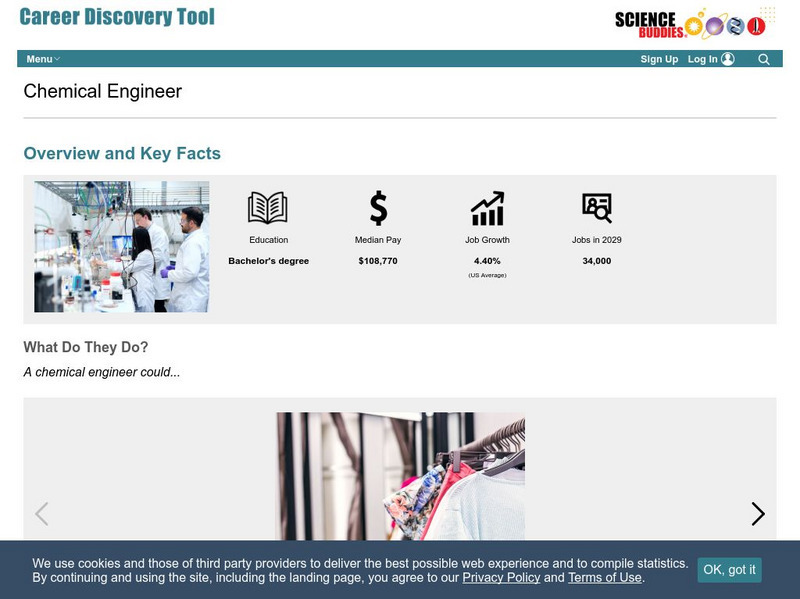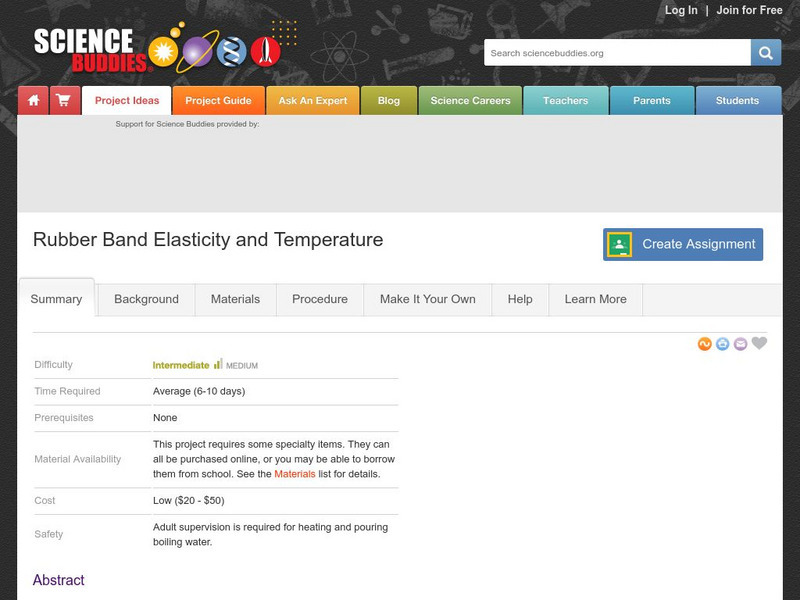Teach Engineering
Sugar Spill!
Sugar isn't good for you, but it's great for yeast! Scholars design an experiment to investigate how variables affect the rate of sugar consumption in yeast. The last installment of a nine-part Life Science unit considers how scientists...
Teach Engineering
Chromatography Lab
Groups use alcohol and chromatography paper to separate the color components of black ink. The purpose of the activity is to allow the class to become aware that mixtures exist in hidden places.
Nuffield Foundation
How Much Energy Is There in Food?
People associate calories with food, but what is a calorie? Young scientists measure the number of calories in samples of food to better understand the concept. They test a variety of samples, take measurements, and compare their results...
Teach Engineering
Water Remediation Lab
Water filtration — that's pure genius! Groups test the ability of a water filter to purify water by running chlorine contaminated water through a filter and measuring the chlorine concentrations as they filter the water. They then graph...
Teach Engineering
Density Column Lab - Part 1
Mass and density — aren't they the same thing? This activity has groups use balance beams and water displacement to measure several objects. The pupils use the measurements to calculate the density of the objects.
Teach Engineering
Density Column Lab - Part 2
Groups suspend objects within layers of liquids to determine the densities of different liquids and compare them to the densities of objects calculated in Part 1. The groups then carefully test their calculations by layering the...
Creative Chemistry
Fossil Fuels Summary
As the title suggests, this is a simple summary of fossil fuels. There are no questions or problems to solve or no notes about fossil fuels. The notes cover how fossil fuels are formed, how we extract them, what humans use them for, and...
Science Buddies
Science Buddies: Career Profile: Chemical Engineer
Read about the career of a chemical engineer on this profile. This Science Buddies site lays out the requirements needed to become a chemical engineer, as well as the education and job description. Included are interviews with people who...
Science Buddies
Science Buddies: Rubber Band Elasticity and Temperature
Many materials expand when heated and contract when cooled. What do you think will happen to the elasticity (stretchiness) of a rubber band when it is heated or cooled to various temperatures?
Technovation
Curiosity Machine: Challenges: Build a Self Powered Rocket
A challenge where students will launch a small object using a chemical reaction. The site contains tips, a lesson plan, and a place for students to document their engineering design process.
Science Buddies
Science Buddies: Project Ideas: Experiment With Genetically Modified Seeds
Compare the growth of normal plants with plants that have been genetically modified to make them resistant to the chemical herbicide Roundup. The Science Buddies project ideas are set up consistently beginning with an abstract,...
Energy4Me
Energy4me: The Petroleum Value Chain
Students will gain an overall picture of the sequence of processes that make up the petroleum industry value chain. Students will learn about the exploration, production, refining, and chemical manufacturing of oil and gas by exploring...










